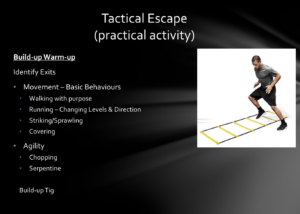Quarrying Technique (diary entry)
- jamie03066
- May 25, 2022
- 2 min read


25.05.2022 Hour 14 with my client from Drum Kempo Ju Jitsu and we continued to explore his Bullyproof Programme. The layout of this programme is very impressive and there isn't anything I disagree with on a basic level. A strong feature of the course led me onto advising on how I grow good tactical movement in students. The feature was the way Will, the client, uses simple activities like ice-breaking as self-protection teaching methods. As he rightly points out, making friends is a very effective way to reduce bullying amongst children. This is then blended into coordination games where paired up children have to keep on moving whilst communicating with one another, collecting and retain information. This prompted me to explain how much my children's self-defence techniques were taken from creating activities. Rather than just leading with the mechanics of a technique, I designed exercises where students found and tested what worked for them. A good starting place is simply walking. You don't get more basic in terms of tactical movement. Layering a general sense of cumulative awareness, including self-awareness, and areas such as posture can be addressed. The walking exercises are developed with prompts to access exits, bringing in various obstacles and ratcheting up simulated crisis levels. Finally, instinctive fighting techniques are brought in so that the students learn how to transition from a normal, placid position to a defensive one and back again. Breathing techniques are brought in to return the students back to a state of calmness before shifting back to the crisis and back again. This little loop acts a microcosm for the whole pre, in and post-fight model of self-protection teaching. Moving into games that deal with defending against threats, the students will find universal fighting patterns such as primal grappling, pushing, framing and evasive footwork. These games serve on at least two levels. Soft skills benefits, as previously discussed, include understanding the predator mindset and the aforementioned usefulness of allies that Will teaches. Hard skills helps students to quarry fighting techniques that we can then sculpt in the lesson. We can chisel away aspects that hold back the technique's efficiency and effectiveness whilst refining the aspects that work, making the technique sharper. Such a process works well with children because the root of the techniques lie in them. They have produce a crude version and should be more inclined to invest on its refinement. https://clubbchimera.com/services/













Comments